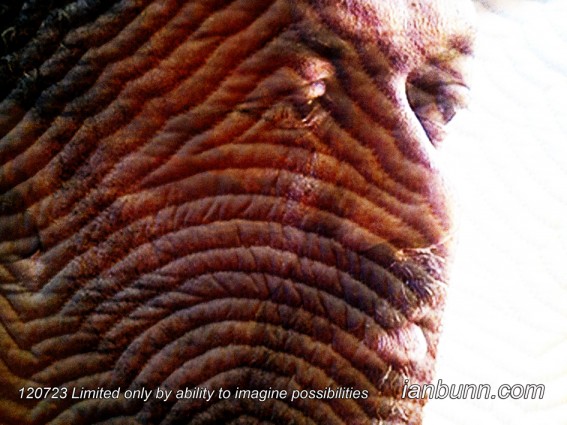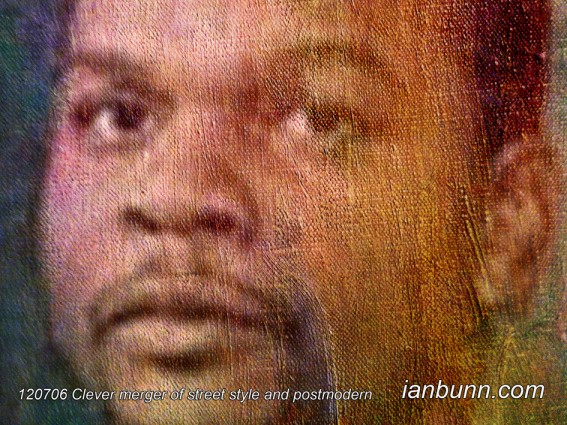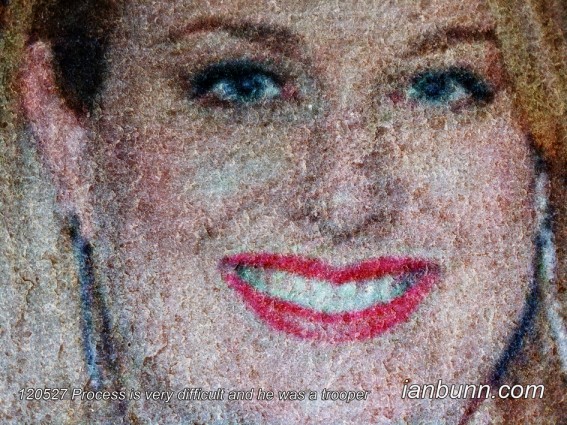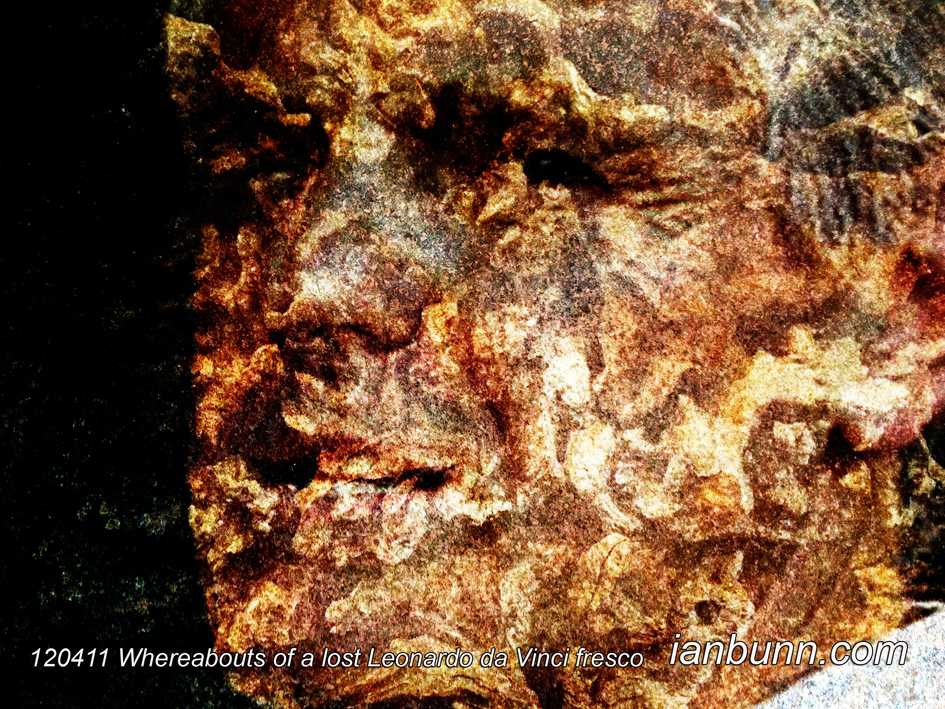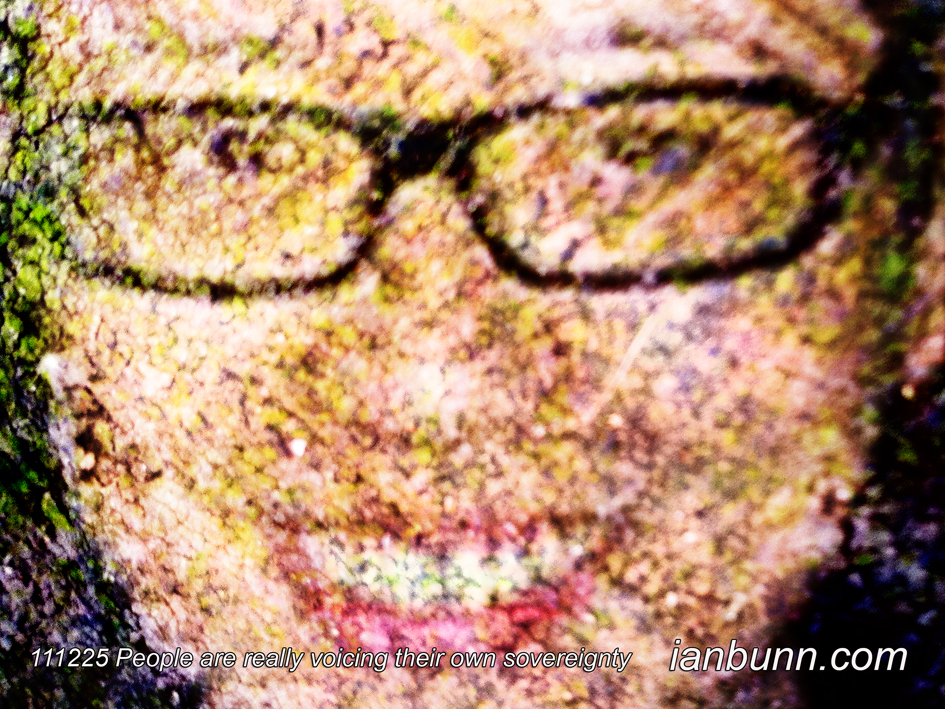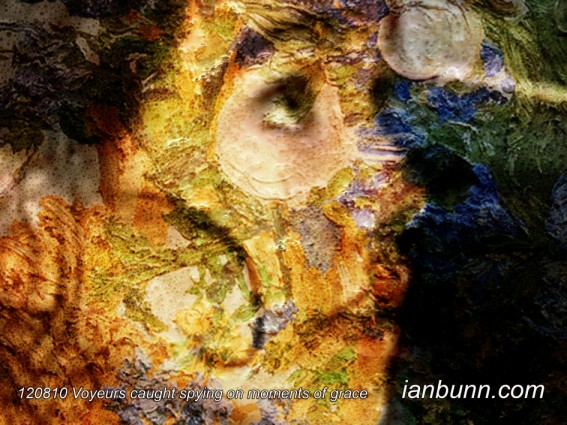 Voyeurs caught spying on moments of grace (August 10 2012)
Voyeurs caught spying on moments of grace (August 10 2012)
Rineke Dijkstra the 53 year old Dutch photographer renowned for her single portraits usually in series of work taking in groups such as adolescents, clubbers, soldiers, recent mothers, or bullfighters; has been profiled by Kyle Chayka in an article published on Artinfo. In the article Chayka states “While working as an editorial photographer on assignment, the artist got into a serious accident. Doctors warned her that if she didn’t exercise extensively she might lose the use of her legs, and so she took to swimming. One day after climbing exhausted out of the pool, she noticed that her eyes were rimmed with red, as if she had been crying. Dijkstra decided to turn that moment into a self-portrait, and the resulting image hangs on the Guggenheim’s gallery wall. …Dijkstra is seen standing against a geometric tiled wall, eyes staring straight ahead at the viewer, worn out yet ferociously self-possessed. It was then that the photographer realized the power of shooting her subjects in moments of distress or suspension, times when the wall between the individual and society comes down and the soul is bared. The strategy pays off viscerally in Dijkstra’s series of portraits of new mothers shot just after birth. The women stand in the hallways of their homes (where Dutch women often give birth) cradling their newborns, faces communicating a captivating mix of shock and bemused joy. … We, of course, are the voyeurs caught spying on their moments of grace. Yet Dijkstra’s accomplishment is that she doesn’t sexualize, idealize, or exoticize what she captures.”
Inspired by Artinfo ow.ly/cECZx image source Twitter ow.ly/cEEfe
